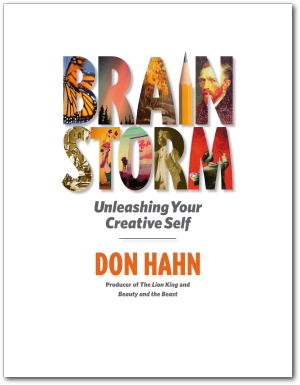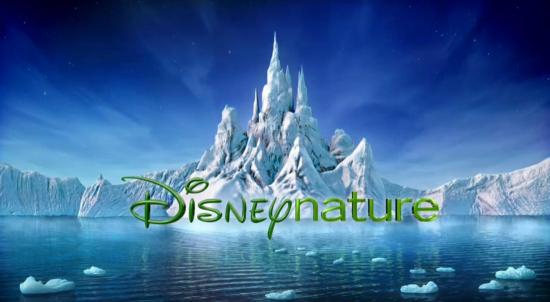February is Awards Season, and The Walt Disney Family Museum is celebrating with film presentations and visitor programs throughout the month. Screening this month in the Museum’s state-of-the-art digital theatre is a collection of Walt’s award-winning True-Life Adventures films.
 Don Hahn produced the classic Beauty and the Beast, the first animated film nominated for a Best Picture Oscar® from the Academy of Motion Picture of Arts and Sciences. His next film, The Lion King, broke box office records to become the top-grossing traditionally-animated film of all time, and a blockbuster Broadway musical. Don also served as associate producer of the landmark film Who Framed Roger Rabbit. His other credits include The Hunchback of Notre Dame, The Disneynature films Earth, Oceans, African Cats, and the upcoming Chimpanzees; and the short The Little Matchgirl—which earned Hahn his second Oscar Nomination. He is currently Executive Producer of Tim Burton’s Frankenweenie, a stop motion animated feature due out in 2012. His new book Brain Storm: Unleashing Your Creative Self is out in bookstores.
Don Hahn produced the classic Beauty and the Beast, the first animated film nominated for a Best Picture Oscar® from the Academy of Motion Picture of Arts and Sciences. His next film, The Lion King, broke box office records to become the top-grossing traditionally-animated film of all time, and a blockbuster Broadway musical. Don also served as associate producer of the landmark film Who Framed Roger Rabbit. His other credits include The Hunchback of Notre Dame, The Disneynature films Earth, Oceans, African Cats, and the upcoming Chimpanzees; and the short The Little Matchgirl—which earned Hahn his second Oscar Nomination. He is currently Executive Producer of Tim Burton’s Frankenweenie, a stop motion animated feature due out in 2012. His new book Brain Storm: Unleashing Your Creative Self is out in bookstores.
I fell in love with all things Disney at a pretty young age. I was born the year that Disneyland opened, and as early as I can remember the new color television in our living room was the place to be on Sunday nights. My family lived in Bellflower, about 20 minutes away from Anaheim, so we made the trip to the Magic Kingdom as often as we could afford to, (after all, parking was 50 cents). We didn’t go to the movies much in our family, but when we did it was Disney films—and only Disney films. I guess it’s no surprise I ended up working at the Studio. For me it was the only studio in Hollywood.
 I never saw nature films at the theater, but as they began to air on television I got hooked on them—as was most of America. One of the most thrilling things was when Walt took us to Adventureland, and on location to show us how the films were made. Knowing the modern equipment and digital cameras we use now, it is a miracle that any of these True-Life Adventures movies made it to the screen. Most of the cameras held about three minutes of film before you had to stop and reload, and with no film labs in the field, the crew had to ship the film home, and hope for the best. It must have been so frustrating.
I never saw nature films at the theater, but as they began to air on television I got hooked on them—as was most of America. One of the most thrilling things was when Walt took us to Adventureland, and on location to show us how the films were made. Knowing the modern equipment and digital cameras we use now, it is a miracle that any of these True-Life Adventures movies made it to the screen. Most of the cameras held about three minutes of film before you had to stop and reload, and with no film labs in the field, the crew had to ship the film home, and hope for the best. It must have been so frustrating.
The True-Life Adventures offered ‘armchair travel’ in an era when few people could dream of going to Africa, or to the wilds of Alaska. It was a place where Walt could combine three of his biggest interests: Nature, storytelling and education. We take nature films for granted these days, with hours of programming on television, but in the late 1940’s, nature films were rare.
The story of how the True-Life Adventures series got started is just amazing to me. As early as 1944 Walt visited with the New York Zoological Society with a plan to make films on animals and wildlife. Walt contacted Al and Elma Milotte, a husband-and-wife filmmaking team, to start shooting footage in Alaska for a feature about the last great American frontier. Their footage ended up being Seal Island, the first film in the series, and that’s what started it all. The irony is that Walt couldn’t sell the movie. RKO, who distributed all of his films, thought no one would want to see a film about seals, and didn’t want it. So Walt booked a theater in Pasadena and played the film for a week, making sure to pack the house and get the reviews in. That qualified the film for an Academy Award nomination, and eventually it won an Oscar. RKO came back and suddenly wanted the film. It’s never easy—even for Walt Disney.
The format of telling compelling stories about animals, and transporting the audience to new and exciting places was an easy fit for the guy who brought you Bambi. In the True-Life Adventures he developed a format of comedy, drama, entertainment, and education that is still used today—and that we aspire to in our Disneynature films.
Disneynature has its roots in March of the Penguins, a film which Buena Vista International distributed in some countries. Jean Francois Camilleri, the head of Disney France suggested we make more films like the highly-successful Penguins. From the strong legacy of the True-Life Adventures, the Studio announced the new brand, and opened with a splash with the first two films, Earth and Oceans. There were definitely comparisons between Disneynature and the True-Life Adventures, which we welcomed. Nature films are a very big part of the Disney legacy and to live up to that legacy we needed the best filmmakers and the highest quality of storytelling…there was never any question about that.

The directors of our next film, Chimpanzee, are the same directors that created the Planet Earth series—to say that they are the best in their field is an understatement. The other problem launching the brand was television. If you want to see nature programming, just turn on cable TV. The solution was to look for films that were best played out on the big screen. We still needed entertainment, and stories that the audience can relate to, but we also need epic scale, and all the best composers, filmmakers, and other talents to craft something that was much more than a television experience. True-Life Adventures were theatrical films, and we wanted to celebrate that legacy by setting the bar high, and making real ‘big screen’ movies.
Some have noted that there seems to be little connection between my larger background in animation and my work on Disneynature, but in fact all of the original True-Life Adventure crew were veterans from Disney Animation. Winston Hibler for example, who narrated many of the True-Life Adventures started at Disney in 1942 as a cameraman in animation, but he soon showed his creative chops by writing the “Johnny Appleseed” segment of Melody Time. He contributed to the stories of Alice in Wonderland and Cinderella—and even wrote song lyrics for Peter Pan and Sleeping Beauty.
He was a great writer who, like Walt, was all about characters. It didn’t matter if it was animated, live action, nature, or a Disneyland attraction. Story was king…and still is. On the Disneynature films, I don’t spend time out in the field with the filmmakers, but we do spend weeks together working out story and characters. The only crazy thing about these nature movies is that you are very likely to throw the script out on the first day. Just like Walt did, we show up and point the camera at the animals and “let nature write the story.”
On Saturday February 25 at 2:00pm, the special program Walt Disney’s Worlds of Nature will feature and a presentation about Walt’s pioneering and frequently-emulated True-Life Adventures films, and showing the relationship between that series and the acclaimed Disneynature documentaries. Tickets for all films and programs are available at the Member Services and Reception Desk at the Museum, or online by clicking here.
